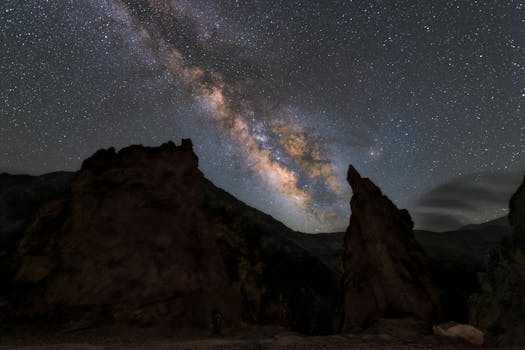
“
Beyond the Milky Way: Imagining New Worlds and Possibilities
Beyond the Milky Way: Imagining New Worlds and Possibilities has been a topic of interest for astronomers and space enthusiasts alike. The Milky Way is just one of the billions of galaxies in the observable universe, and the possibility of other worlds beyond our own galaxy is a fascinating one. In this article, we will explore the possibilities of new worlds beyond the Milky Way, including exoplanets, black holes, and other celestial bodies.
Introduction to the Milky Way
The Milky Way is a barred spiral galaxy that is estimated to be around 100,000 light-years in diameter. It is thought to contain hundreds of billions of stars, as well as various types of interstellar gas and dust. The Milky Way is just one of the many galaxies in the observable universe, and it is believed to be part of a larger galaxy cluster called the Local Group.
Exoplanets and the Search for Life
One of the most exciting areas of research in astronomy is the search for exoplanets, which are planets that orbit stars outside of the Milky Way galaxy. Over 4,000 exoplanets have been discovered so far, and many of these planets are believed to be located in the habitable zones of their respective stars, where conditions are suitable for life as we know it. The discovery of exoplanets has opened up new possibilities for the search for life beyond Earth, and has raised questions about the potential for life on other worlds.
Black Holes and Dark Matter
Black holes are regions of spacetime where gravity is so strong that nothing, not even light, can escape. They are formed when a massive star collapses in on itself, and can have a significant impact on the surrounding space. Dark matter, on the other hand, is a type of matter that does not emit or reflect any light, making it invisible to our telescopes. Despite its elusive nature, dark matter is thought to make up around 27% of the universe, while ordinary matter makes up only around 5%.
Imagining New Worlds and Possibilities
As we continue to explore the universe and discover new worlds beyond the Milky Way, we are forced to consider the possibilities of life on other planets. Could there be intelligent life forms on other worlds, or are we alone in the universe? What would it be like to visit another planet, or to encounter an alien civilization? These are the kinds of questions that have captivated human imagination for centuries, and will likely continue to inspire us as we push the boundaries of space exploration.
Conclusion and Takeaways
In conclusion, the possibilities of new worlds beyond the Milky Way are endless and fascinating. From exoplanets and black holes to dark matter and the search for life, there is still so much to be discovered and explored. As we continue to push the boundaries of space exploration, we may uncover new and exciting possibilities that challenge our current understanding of the universe. Some key takeaways from this article include:
- The Milky Way is just one of the billions of galaxies in the observable universe.
- Exoplanets and the search for life are exciting areas of research in astronomy.
- Black holes and dark matter are mysterious and elusive phenomena that continue to capture our imagination.
- The possibilities of new worlds beyond the Milky Way are endless and fascinating.
See more:
https://www.nasa.gov
https://www.esa.int
https://www.space.com







